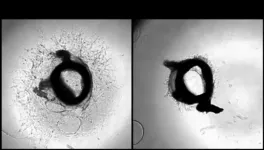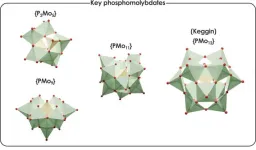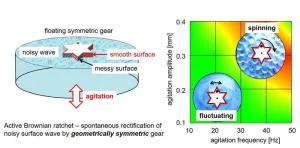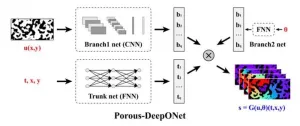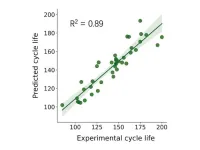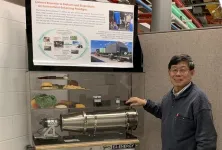(Press-News.org)
Atherosclerosis, a major cause of mortality worldwide, involves an overgrowth of vascular smooth muscle cells in the blood vessels, constraining blood flow and potentially causing cardiovascular diseases. Against this backdrop, researchers from Shinshu University recently developed a DNA aptamer called iSN04 that targets and counteracts with the protein nucleolin in smooth muscle cells. This anti-nucleolin aptamer helps maintain smooth muscle cells in a differentiated state, offering new treatment potential for atherosclerosis and other vascular diseases.
Heart diseases and strokes are on the rise worldwide, with atherosclerosis being a leading contributor. Atherosclerosis involves the buildup of plaques—composed of fat, cholesterol, calcium, and other substances found in the blood—inside the arteries. Over time, this buildup can lead to the hardening and narrowing of the arteries, restricting blood flow. Notably, this condition involves vascular smooth muscle cells (VSMCs) in the arterial walls.
VSMCs can switch between a contractile state (ideal for blood vessel function) and a proliferative state (capable of contributing to plaque formation). During atherosclerosis, the switch from a contractile to a proliferative state can lead to plaque instability and rupture, underscoring the importance of a corresponding therapeutic strategy.
Traditional treatments for atherosclerosis typically focus on lowering cholesterol levels and managing risk factors like high blood pressure. However, a novel approach involves directly targeting VSMCs to stabilize plaques and prevent their rupture. This innovative strategy has led researchers from Shinshu University, Japan, to develop a novel nucleic acid drug called iSN04. Associate Professor Tomohide Takaya, from the Faculty of Agriculture, Shinshu University led the study. Ms. Mana Miyoshi, affiliated with the Department of Agriculture, Graduate School of Science and Technology, Shinshu University, contributed to the study as the first author. Their findings were published on 15 June 2024 in Volume 14 of the journal Biomolecules.
iSN04 belongs to a group of nucleic acid drugs called DNA aptamer—a short, single-stranded DNA molecule capable of selectively binding to a specific target of interest. iSN04 interacts with a protein called nucleolin in VSMCs.
Nucleolin plays a role in the de-differentiation (loss of specialized function) and proliferation of VSMCs, contributing to plaque formation and instability. By targeting nucleolin with iSN04, the researchers aimed to keep VSMCs in their contractile state, thereby reducing plaque formation and promoting plaque stability.
Interestingly, the same research group laid the groundwork through multiple previous studies for the current study. Dr. Takaya says, “Our anti-nucleolin DNA aptamer, iSN04, was originally identified as an inducer of skeletal muscle differentiation in 2021. Subsequently, we found that iSN04 also promotes cardiac muscle differentiation in 2023. Therefore, we hypothesized that iSN04 could promote smooth muscle differentiation.” He adds, “This study showed that iSN04 indeed induces vascular smooth muscle cell differentiation, resulting in the inhibition of angiogenesis.”
The study showed that iSN04 can help maintain VSMCs in their contractile, differentiated state. The researchers interestingly found that iSN04 can effectively enter VSMCs without any carriers. Once inside, iSN04 reduced VSMC proliferation and increased the levels of a protein marker called α-smooth muscle actin, helping VSMCs in achieving a contractile state.
Another concern the researchers sought to address was angiogenesis within plaques. Angiogenesis refers to new blood vessel formation within plaques that can lead to their instability and rupture. The study demonstrated that iSN04 could inhibit angiogenesis in an experimental model using mouse aortic rings, indicating its potential to stabilize plaques. Ms. Miyoshi remarks, "Given our anti-nucleolin DNA aptamer inhibits angiogenesis by inducing VSMC differentiation, it can find applications as a nucleic acid drug for pathological angiogenesis involved in atherosclerosis, cancer, and retinopathy."
The breakthrough development of iSN04 marks a promising new chapter in the fight against atherosclerosis, could revolutionize its treatment and improve patient outcomes globally.
###
About Shinshu University
Shinshu University is a national university founded in 1949 and located nestling under the Japanese Alps in Nagano known for its stunning natural landscapes. Our motto, "Powered by Nature - strengthening our network with society and applying nature to create innovative solutions for a better tomorrow" reflects the mission of fostering promising creative professionals and deepening the collaborative relationship with local communities, which leads to our contribution to regional development by innovation in various fields. We’re working on providing solutions for building a sustainable society through interdisciplinary research fields: material science (carbon, fiber and composites), biomedical science (for intractable diseases and preventive medicine) and mountain science, and aiming to boost research and innovation capability through collaborative projects with distinguished researchers from the world. For more information visit https://www.shinshu-u.ac.jp/english/ or follow us on X (Twitter) @ShinshuUni for our latest news.
END
Researchers from the group of Prof. Carles Bo, at the Institute of Chemical Research of Catalonia (ICIQ-CERCA), have described a computational methodology that simulates complex processes involving different chemical species and diverse conditions. These processes lead to the formation of nanostructures called polyoxometalates (POMs), with important applications in catalysis, energy storage, biology and medicine.
"Our group has recently developed unique methods to study the chemistry of polyoxometalates in solution, their speciation and formation ...
The ratchet mechanism is a fascinating energy-conversion system that converts disorderly or random motion into orderly, directed movement through a process known as spontaneous rectification. It is a critical component of mechanical systems, typically consisting of a gear and a pawl, which restricts the movement of the gear in one direction. In biological systems, the concept of a Brownian ratchet has been proposed to help understand the mechanism of molecular motors, where chemical reactions rectify the random thermal motion of molecules.
According to the second law of thermodynamics, uniform thermal ...
Porous media play a critical role in various industrial fields due to their complex pore networks and considerable specific surface areas. The transport and reaction phenomena within porous media are key factors influencing fundamental parameters such as energy storage efficiency, catalytic performance, and adsorption rates. To accurately describe these complex transport and reaction processes, solving parameterized partial differential equations (PDEs) is necessary. However, due to the complex structure of porous media, traditional methods, such as the finite element method ...
ROCKVILLE, Md. – August 19, 2024 – The Association for Molecular Pathology (AMP), the premier global molecular diagnostic professional society, and world-renowned pathologist Michael Laposata, MD, PhD, today announced the filing of a lawsuit challenging the recent U.S. Food and Drug Administration (FDA) Rule that regulates laboratory developed test (LDT) procedures as medical devices under the Federal Food, Drug, and Cosmetic Act. The lawsuit was filed in the U.S. District Court for the Southern District of Texas against the FDA; Robert M. Califf, MD, in his official capacity as Commissioner of Food and Drugs; the U.S. Department of Health ...
Nylon, Teflon, Kevlar. These are just a few familiar polymers — large-molecule chemical compounds — that have changed the world. From Teflon-coated frying pans to 3D printing, polymers are vital to creating the systems that make the world function better.
Finding the next groundbreaking polymer is always a challenge, but now Georgia Tech researchers are using artificial intelligence (AI) to shape and transform the future of the field. Rampi Ramprasad’s group develops and adapts ...
LA JOLLA (August 14, 2024)—Professor Rusty Gage has been awarded the 2024 J. Allyn Taylor International Prize in Medicine by the Schulich School of Medicine & Dentistry and the Robarts Research Institute at Western University. One of the most prestigious medical research awards in Canada, the Taylor Prize recognizes scientists for transformative, career-defining work in basic sciences, translational research, and medical innovations.
This year’s prize specifically honors a research leader in aging-related medical science and research—a long-term focus of Gage and his lab. Gage will receive $50,000 and be celebrated at a Robarts Research ...
We know that quality sleep is as essential to survival as food and water. Yet, despite spending a third of our lives in slumber, it largely remains a scientific mystery.
Not that experts haven’t tried.
Sleep analysis, also known as polysomnography, is used to diagnose sleep disorders by recording multiple types of data, including brain (electroencephalogram or EEG) and heart (electrocardiogram or ECG). Typically, patients are hooked up to dozens of sensors and wires in a clinic, tracking brain, ...
1. NIMS and SoftBank Corp. have jointly developed a model capable of predicting the cycle lives of high-energy-density lithium-metal batteries by applying machine learning methods to battery performance data. The model proved able to accurately estimate batteries’ longevity by analyzing their charge, discharge and voltage relaxation process data without relying on any assumption about specific battery degradation mechanisms. The technique is expected to be useful in improving the safety and reliability of devices powered by lithium-metal batteries.
2. Lithium-metal ...
Natasha Sheybani, assistant professor of biomedical engineering at the University of Virginia School of Engineering, will collaborate with researchers at Children’s National Hospital to study the combination of two therapies for pediatric brain cancer.
High-risk brain tumors in children often don’t respond well to existing chemotherapy and radiation treatments, but Sheybani and her collaborators hope their fusion of therapies will offer a better option.
Over the two-year project, researchers ...
URBANA, Ill. – As the world faces the challenges of mitigating climate change and providing resources for a growing population, there is increasing focus on developing circular economies for sustainable production. But to evaluate strategies and impacts, it is necessary to have reliable metrics. Researchers at the University of Illinois Urbana-Champaign have developed a Circularity Index that provides a comprehensive method to quantify circularity in bioeconomic systems. In a new paper, they outline the method and apply it to two case studies – a corn/soybean farming operation and the entire U.S. food and agriculture system.
“The ...
